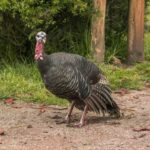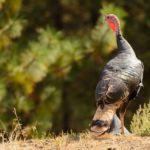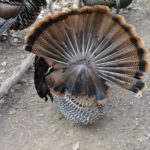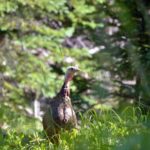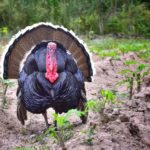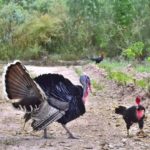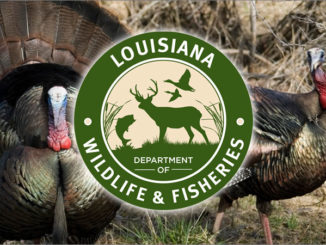
“The target area you’re aiming for is about the size of a grape fruit,” Lafleur said. For that reason, shot placement is everything. A heart and lung shot is ideal, but one that disables the bird due with an arrow in the body so that it can’t fly away is also lethal.
“If you hit the top of the drum stick it can’t go anywhere,” he said. “Then, you can run him down. Even if he does fly away, turkeys bleed more than you think. I’ve seen a good blood trail from a turkey. If it’s flying, then you can typically see where he lands.”
In the field, you may never get a perfect shot opportunity. However, it’s possible to disable a turkey from various angles and still make a harvest. You just need to know where the vitals are and exactly where to place your arrow. Here are those scenarios and the best place to aim.
Broadside
“If you put the arrow in between the wing butt, where it meets the body, and the beard, that’s a good spot to hit,” Carson said. This shot will not only break both wings, but likely hit the lungs and heart, ensuring a kill.
“Some people also aim for the top of the drumstick where it meets the body,” he continued. “This disables the bird. In that case you’ll have to finish him off.”
Erect, facing away
In this scenario, it’s best to aim for the spine a few inches below the neck. This will break the spine. “Obviously if you hit the bird in the spine he’s not going to go anywhere,” Lafleur said. “If you shoot low, you’ll hit the guts or the vitals.” Just be sure to wait until the bird is standing upright and not feeding. In the latter position, you may miss the spine as it’s curved downward.
Strutting, facing away
With a turkey in full strut, it’s feasible to shoot when it’s not facing you. Not only are his eyes off of you, but its feathers are erect, offering a shot opportunity. An arrow placed at the base of the anus will impact the vitals.
Erect, facing you
Most of the time, you’ll be hard-pressed to get this shot off without being noticed — the tom will be staring right at you. However, if it’s your only shot opportunity, aim about 4 inches below the base of the neck. A wide-cutting, expandable broadhead will inflict damage to the vitals and spine.
Strutting, facing you
When a gobbler barges into your decoy spread at full strut, his eyes are likely focused on the decoys and not you. As you would with the previous shot scenario, aim below the base of the neck, about where its beard starts.
Strutting, broadside
Although a broadside shot may seem like an ideal angle, when a tom is in full strut, its erect feathers make it hard to find the kill zone. It’s best to wait for another opportunity when the bird settles down or turns.
